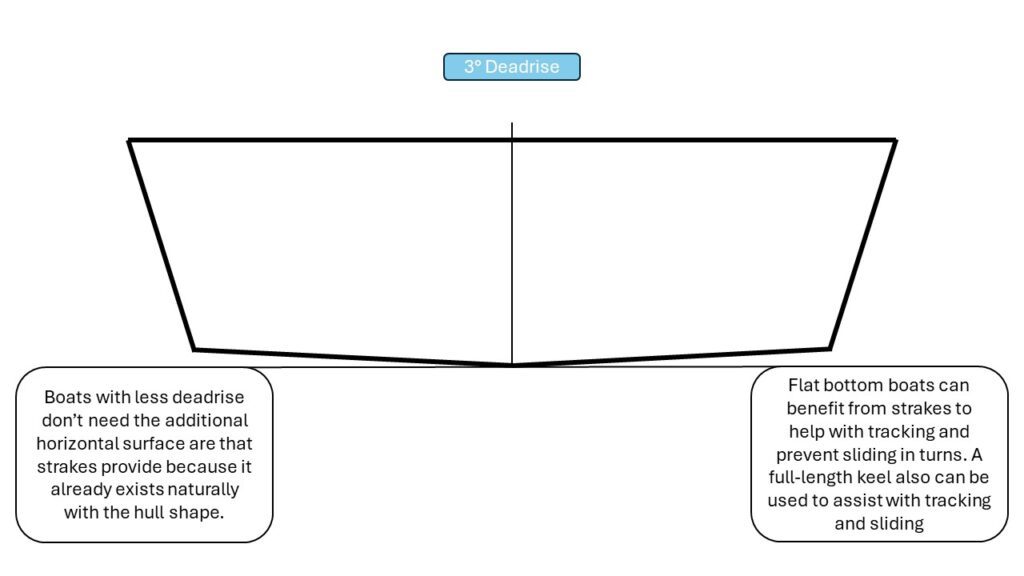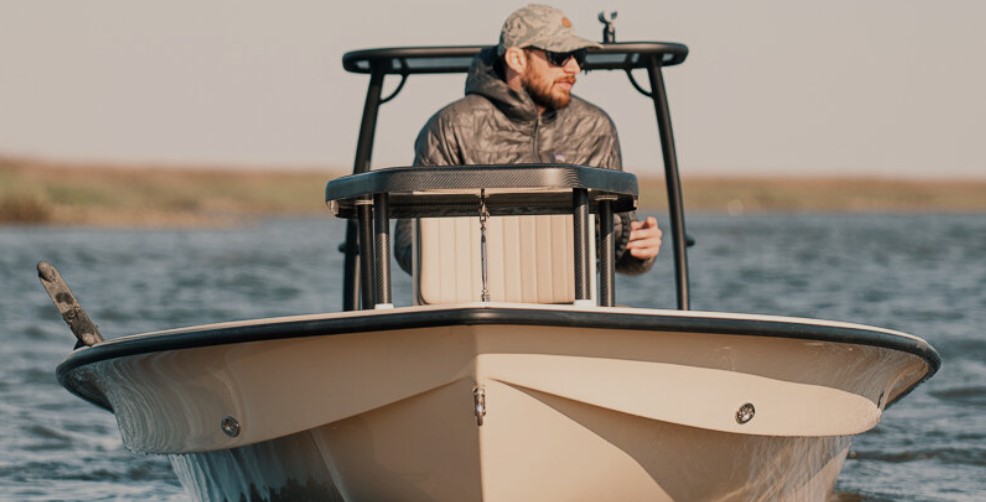Strakes
Among the many features that enhance a center console fishing boat, bay boat, or flats boat’s performance and efficiency, strakes stand out as a crucial element. But what exactly are strakes, and how do they impact a powerboat’s performance? In this post, we will dive into what strakes are, what they do, and when you need them and when you don’t. Strap in, it’s going to be a doozy!
Deadrise is a key component in the need and effectiveness of strakes. If you haven’t read our post on deadrise, you may want to start there. This discussion assumes that you are familiar with deadrise.
What are strakes?
Strakes are longitudinal ribs or ridges on a powerboat’s hull, extending from bow to stern or along its sides. These structures serve multiple purposes, including improving stability, reducing drag, and enhancing maneuverability. They come in various forms, including chines, spray rails, and lifting strakes, each contributing uniquely to the boat’s hydrodynamics.
We will talk about lifting strakes and spray rails below. We will leave chines for a later post of its own.

One of the primary functions of strakes is to disrupt water flow along the hull, reducing drag and improving overall efficiency. By creating turbulence, strakes help lift the powerboat’s bow, allowing it to glide more smoothly through the water. Lifting strakes, in particular, are strategically placed along the deadrise of the hull, helping to generate lift and increase stability, especially at higher speeds. As a hull with more deadrise (Deeper vee shape) pushes down into the water there is less resistance than if a straight horizontal surface was pushing against it. Adding strakes increases the horizontal surface area that pushes against the water increasing lift and resisting the push down into the water. This improves time to plane and the ride in heavy seas.
The same concept of “pushing back” against the water can help reduce rolling and improve stability in deep-vee boats which have a tendency to be more tippy at rest than boats with less deadrise.
Strakes on Low-Deadrise Boats
Flat-bottom boats don’t need the lifting properties of strakes like a deep-vee hulled boat does. Instead, strakes can help the boat track straight and not slide in turns. Some flatter-bottomed boats use one larger keel or multiple smaller strakes.
Jon boats and other aluminum boats use strakes to provide stiffness and strength to the thin metal hull.


Spray Rails
Spray rails are essentially strakes that, rather than being under the water, are positioned higher on the sides of the hull to knock down the spray that comes up from the hull as it breaks through waves. They are a big deal on flats boats and other boats that have low freeboard, otherwise you will have a pretty wet ride in a chop.
Conclusion and Shameless Plug
The Atlas Boatworks 23F is a center console fishing boat with three degrees of deadrise. This means that strakes are not needed for lifting or stability. However, sliding in turns can be an issue with an almost flat bottom. We’ve added a full-length keel to assist with tracking. We’ve also incorporated reverse chines (more on that in a later post) that double as spray rails to knock down any spray resulting in a dry, comfortable, ride.

